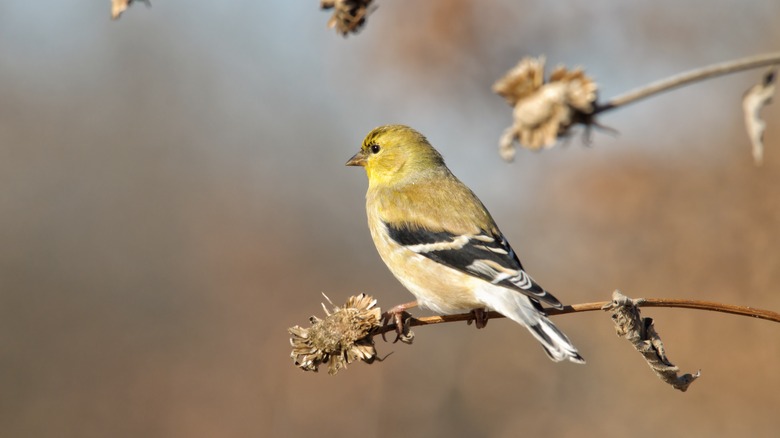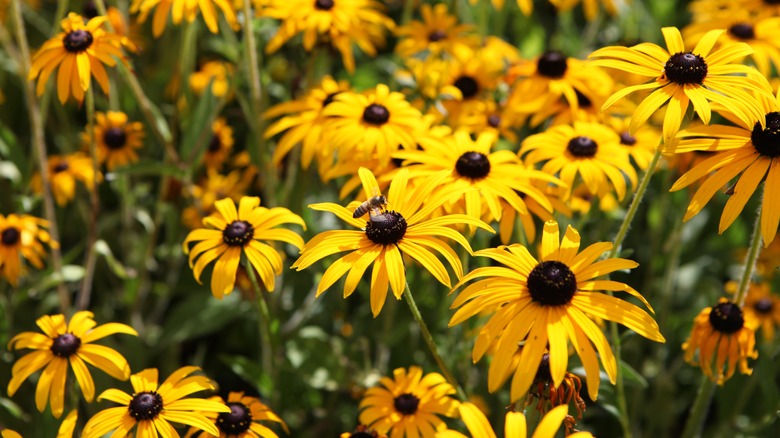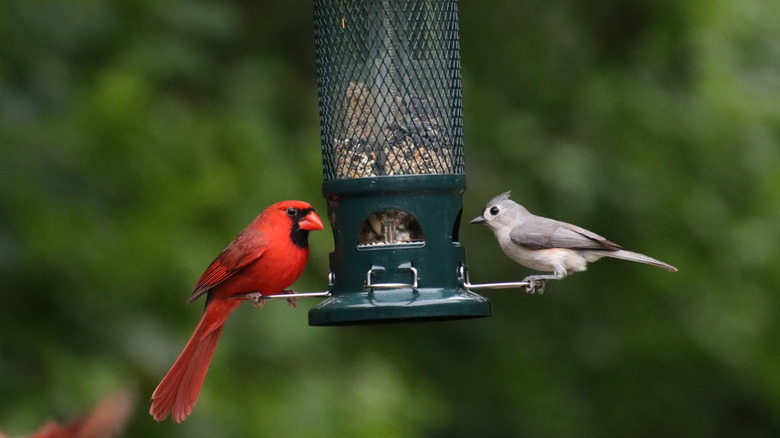The Colorful Perennial That'll Keep Birds Flocking To Your Yard All Winter Long
Attracting birds to your yard can certainly be an educational opportunity as you peer out your window quizzically wondering what type of feathered creature flew in for a visit. I suppose this is why some of us fall into birdwatching as a pastime as we grab our binoculars and field guides to satisfy our curious minds. But beyond the general interest and beauty birds bring about, they can also be hugely beneficial to your landscape. To start, they pollinate your plants, as well as eat and get rid of unwanted insects such as grasshoppers and aphids ... and they even take delight in munching on weed seeds, which is a win-win for both you and your backyard.
Lucky for us, the benefits stretch beyond the warmer months as some birds choose to stick around in the wintertime, boosting the health of the ecosystem and landscape. Some common winter birds you might come across in four-season climates include the American goldfinch, the adorable black-capped chickadee, and the northern cardinal. One way to attract more birds to your garden year-round is to plant a stunning flower called the black-eyed Susan that will continue to provide food for birds in the winter. The flower is bright yellow with a brown center and blooms from summer to early fall. The stems grow to be about three feet tall, and the seeds from the spent flowers attract birds.
The flower seeds provide food for birds in the winter
Often birds that do not migrate adjust their diet to survive the winter months and search for seeds to eat. The seeds provide a source of protein and fat that they might usually get from insects and fruit in the summer. In the case of the black-eyed Susan, the seed heads provide an excellent source of nutrition, particularly for birds that may be too shy to come to the feeder. Just one flower head can produce hundreds of seeds.
As far as what you need to do to overwinter your black-eyed Susans, it's quite simple. It is recommended to leave pruning for spring and let the seed heads die on the stems over winter. Seed heads are the dried flowering part of the plant containing the seeds. Although your flowers will look lifeless and kind of dull starting in fall, the seed heads will greatly benefit birds. Smaller birds tend to perch on them to collect food, while larger birds will look on the ground where the seeds fall.
Seeds can be stored and used in your bird feeder year-round
Another method that still gives you the benefit of attracting birds, is to cut your spent flowers before winter and collect seeds from them that you can use as bird food throughout the year. In this case, wait until fall to clip the seed heads of your plants with spent flowers. Next, you will want to lay the seed heads out to dry for a couple of weeks. Once they are dry, there are a couple of methods to get the seeds out. One includes placing the dried seed heads in a closed glass jar and shaking the jar with your hands –- you will notice the tiny black seeds will start to fall out, and you can collect them. The seeds can be stored for a couple of years for bird food or you can use them to plant in your garden too – just be sure to store them in a dry cool place.
Black-eyed Susans are stunning and attract birds to your yard that you can enjoy year-round. They also attract beneficial insects and pollinators such as bees and butterflies in the summer months. If you plan to add the daisy-like flower to your backyard this spring, here's everything you need to know before planting them.


